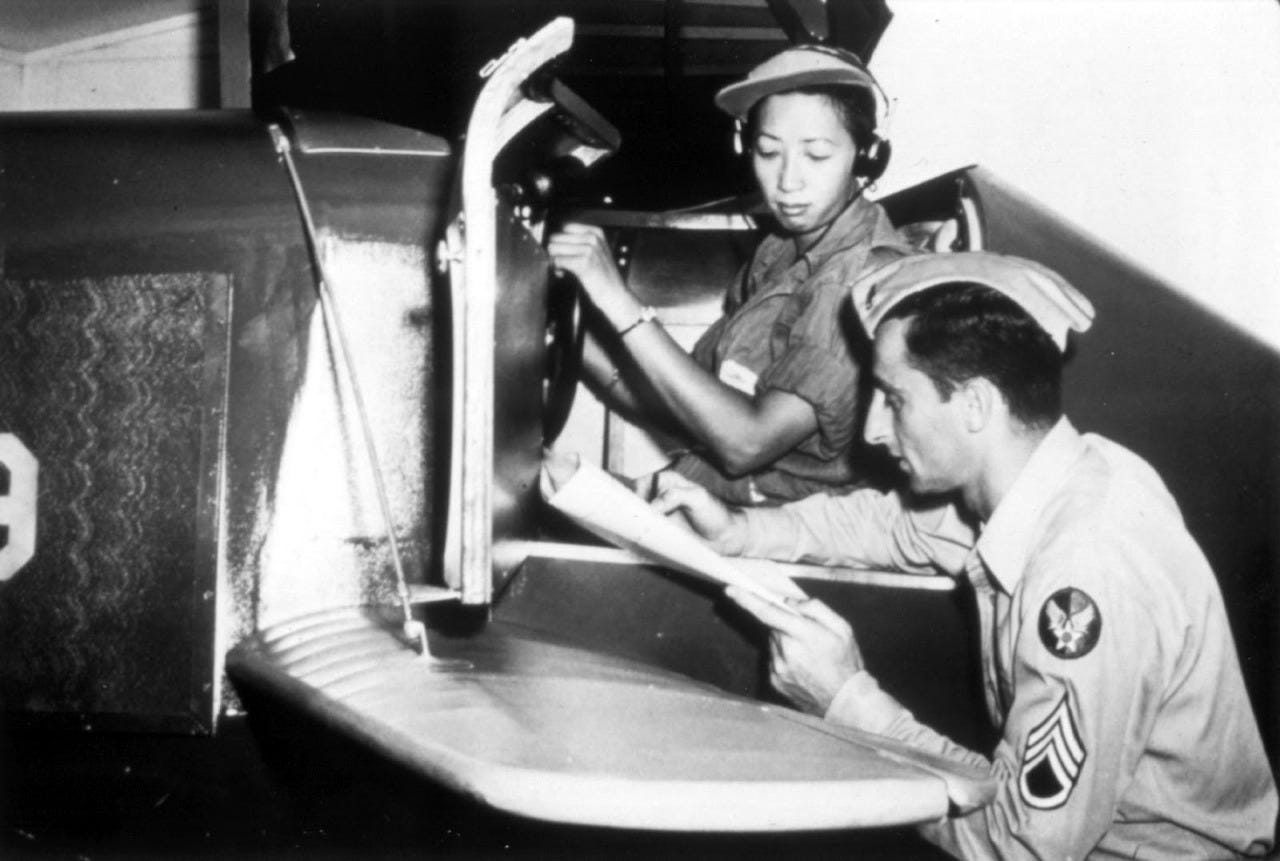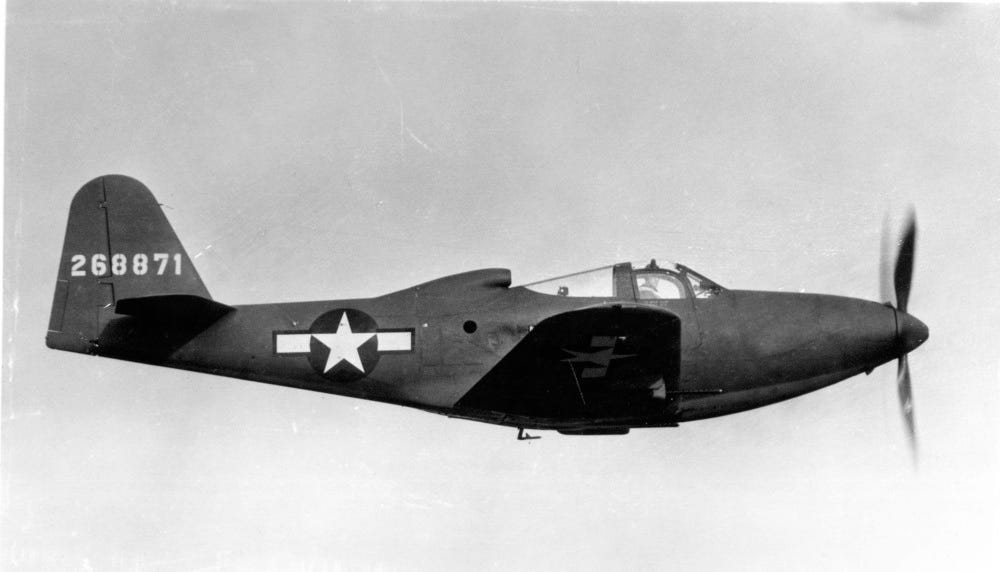Hazel Ying Lee: World War II Chinese American WASP
With the annual celebration of the Chinese New Year in full swing, I am sharing one of my favorite stories about our brave Women Airforce Service Pilots-WASP. Hazel Ying Lee was born in 1912 into a large Chinese American family, living in Portland, Oregon, Hazel was always strong-willed. Growing up, she knew she would not be the stereotype of the passive Chinese woman. She enjoyed risk and adventurous activity. In 1930, after high school graduation, instead of working in her parents’ Chinese restaurant, Hazel became a department store elevator operator. Then, Hazel took her first airplane ride at an airshow. From that point on, she knew exactly what she wanted to do. She had to fly. Despite her mother’s opposition, Hazel began her flight training at the Chinese Flying Club of Portland (CFCP). This was also the location of the Al Greenwood Flying School at the main airport on Swan Island. Greenwood coached Hazel in the finer art of flying the small biplane through graceful loops, rolls, and spins. Hazel was a natural aviator and loved the command of her plane.
Hazel Ying Lee after earning her pilot’s license in 1932. (U.S. Air Force archive)
In October, 1932, Hazel became one of the few licensed female Chinese American pilots. Then, Hazel met her future husband, Clifford Louie Yim-qun, who was also a CFCP pilot. When Japan invaded Manchuria, Hazel, Louie, and scores of other Chinese Americans responded to provide aid to the Chinese Air Force. Louie joined a flying squadron and taught Chinese flyers to fight in the air. Even with the enormous need for pilots, the Republic of China Air Force would not accept a woman. Hazel was forced to “fly a desk.” Disappointed and frustrated, she moved to Canton, where she was able to fly for a private airline. With few women aviators in the entire country, she was “allowed” to fly because her aviation skill was desperately needed. In 1938, Hazel again offered her aviation talent to the Chinese military. She was again rejected because she was a woman.
As Japanese bombs continued to fall on Hazel, friends, and neighbors in Canton, Hazel knew, as a non-citizen, she needed to return to the United States. She escaped through Hong Kong to New York City. She became a buyer of war materials for besieged China. After the 1941 Japanese sneak attack on Pearl Harbor, Hazel was vigilant for another opportunity to contribute her talent to help win World War II. In 1943, when the Women Airforce Service Pilot program was created, Hazel was accepted into the 4th class or 43-W-4 at Avenger Field for the flight training.
Already a pilot, Hazel Ying Lee easily mastered the Link Trainer, an early flight simulator which replicated basic flight controls and aircraft instruments. WASP practiced flight maneuvers while still safely on the ground. (U.S. Air Force archive)
At WASP graduation, Hazel became the first Chinese-American woman to fly for the United States military. Next, Hazel was assigned to the Third Ferrying Group at Romulus, Michigan. The WASP mission was to fly recently manufactured aircraft from the converted automobile factories to various locations across America. Those new airplanes were eventually shipped to the European and Pacific theaters of operations. Flying newly manufactured airplanes over long distances is extremely dangerous. Other WASP describe Hazel as always calm and fearless, even in frequent air emergencies, or “off-field landings,” aka crashes.
Hazel was always fun and high-spirited. She would often use red lipstick to write Chinese good luck characters on the tails of the airplanes she had to fly. One time, Hazel had a forced landing in a Kansas wheat field. The farmer, armed with a pitchfork, chased her around her plane while he called to his neighbors, “The Japanese have invaded Kansas!” Fighter that she was, Hazel jumped on his back shouting in perfect English that she was an American and her plane had official United States military markings on it. Maybe the Chinese good luck characters in red lipstick threw him off? Eventually, they believed Hazel and the Kansas farmer and his neighbors pitched in to help her get her plane back in the air.
In September, 1944, Lee was chosen for intensive flight training for Pursuit School at Brownsville, Texas. Only 134 WASP were selected to fly the faster, high-powered P-63, P-51, and P-39 fighter airplanes. Lee and the other WASP were the first women to pilot fighter aircraft for the United States military. Hazel loved the P-51 Mustang, as do many pilots today. During World War II, over 15,000 P-51s were manufactured.
In November 1944, Lee received orders to pick up a P-63 Kingcobra from the Niagara Falls Bell Aircraft factory for delivery to Great Falls. During WWII, Hazel and other WASP delivered over 5,000 of these fast airplanes in Montana, which was a Lend-Lease program supply link for airplanes to the Soviet Union. From Great Falls, male pilots flew the fighter aircraft to Alaska. Then, Soviet pilots flew them back to Russia to fight the Nazi forces.
World War II P63A Kingcobra. (San Diego Air and Space Museum archive)
Bad weather often delayed the process, jamming the Great Falls airspace. But, on November 23, 1944 weather had cleared, allowing Hazel to approach the airport. Tragically, due to air traffic controller confusion, Hazel’s Kingcobra collided with another P-63. Hazel was able to get her flaming aircraft back on the ground where rescuers pulled her from the burning wreckage. Burned too badly, Hazel died a horrible death two days later. Hazel Ying Lee was the last of the 38 WASP to die in service during World War II.
Because WASP were considered civilians by the military then, when killed on a mission or in aviation training, the military would not pay for the shipment of their remains to their homes for burial. The grieving family or other WASP paid the expenses for shipment of the bodies. The WASP were not allowed to be buried with an American flag and other military honors. Families were not even authorized to display a Gold Star in their windows. When the Lee Family prepared to bury Hazel’s remains, they were informed by the Portland cemetery that the location chosen was in a ‘White only section,” where Asians could not be buried. Only after a legal battle and the help of President Roosevelt was Hazel allowed to be buried where the family had planned. But, not with military honors. Incredibly, not until 1977 were World War II WASP given Veteran status. In 2015, citing limited space at Arlington National Cemetery, the Secretary of the Army denied WASP burials at Arlington. Martha McSally, former U.S. Air Force Fighter Pilot and, then U.S. Congresswoman, introduced bi-partisan legislation to reverse the Obama Administration policy. Thanks to McSally and Congress, the WASP can have their remains interred at Arlington National Cemetery. The WASP fought nearly 75 years to be recognized for their bravery and for their contributions in defeating the Axis Powers. Their stories need to be told often.
Enjoy this short video about Hazel Lee Ying







Inspiring and so many wonderful stories yet to share. Thanks
Hazel Ying Lee was the last of the 38 Women Airforce Service Pilots-WASP who gave her life in the service of our country during World War II. She was burned to death in the crash of the military Kingcobra that she was ordered to fly to Montana. Air controller error was the reason for the airplanes to collide at the Great Falls airport. Hazel was burned in her flight suit when they pulled her from the burning aircraft. She lingered on for two days so badly burned she could hardly be recognized. The medical team even commented on her brave and stoic fight to live. Her story is one which demonstrated courage and patriotism. Her use of Chinese good fortune symbols reflected her heritage. Pilots often named their airplanes and painted them during World War II. Thanks for sharing your interesting view from the Grit and Lace story.